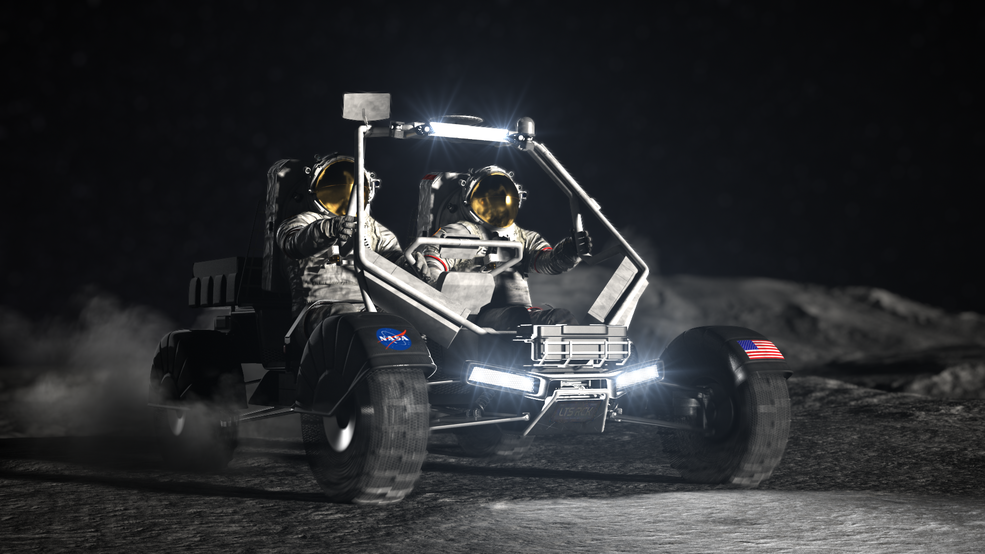|
Getting your Trinity Audio player ready...
|
NASA has issued a call for industry proposals to develop a next-generation Lunar Terrain Vehicle (LTV) that will enable astronauts to conduct more extensive exploration and scientific research in the south polar region of the Moon during Artemis missions.
The LTV will serve as a crucial means of transportation for Artemis astronauts, allowing them to cover more ground and gather samples that would be otherwise inaccessible on foot. Rather than owning the rover, NASA will contract LTV services from industry partners, harnessing commercial innovation to provide the best value to U.S. taxpayers while accomplishing its ambitious human spaceflight goals.
“We want to combine industry’s knowledge and innovation with NASA’s expertise in rover operations to create the most advanced surface rover for our astronaut crews and scientific researchers,” said Lara Kearney, manager of NASA’s Extravehicular Activity and Human Surface Mobility program at the Johnson Space Center.
The LTV will merge the functionalities of the Apollo-style lunar rover and the uncrewed rovers used on Mars, combining crewed and uncrewed capabilities. This hybrid design will enable the LTV to continue conducting scientific research even when astronauts are not present on the lunar surface. It will allow Artemis astronauts to traverse the Moon, transport scientific equipment, and explore areas that were previously out of reach.
In its Lunar Terrain Vehicle Services request for proposals, NASA has outlined the requirements for companies interested in developing and demonstrating the LTV. NASA encourages companies to produce an innovative rover that NASA and other commercial customers can utilize for multiple years. The selected LTV must be able to operate remotely, transporting cargo and scientific payloads between crewed landing sites to facilitate additional science exploration and resource prospecting.
To operate effectively in the unique lunar South Pole environment, including permanently shadowed regions and extended periods without sunlight, the LTV will incorporate advanced systems such as power management, semi-autonomous driving, communication and navigation systems, and protection against extreme lunar conditions.
Companies submitting proposals are expected to provide end-to-end services, including development, delivery to the lunar surface, and execution of operations. Each LTV must be capable of accommodating two suited astronauts, supporting a robotic arm for scientific exploration, and withstanding the extreme temperatures at the lunar South Pole. The selected company will need to successfully demonstrate the LTV’s capabilities in the lunar environment before it can be used for crewed missions.
NASA plans to integrate the LTV into crewed operations starting with the Artemis V mission in 2029. Prior to the arrival of astronauts, the rover will be utilized for uncrewed and commercial activities upon landing on the lunar surface.
Proposals for the LTV services contract are due on July 10, 2023, with the contract award scheduled for November 2023. This proposal request incorporates industry feedback received through a draft proposal request and a previous request for information.
Through the Artemis program, NASA aims to send astronauts, including the first woman and the first person of color, to explore the Moon for scientific discovery, and economic benefits, and to establish the groundwork for crewed missions to Mars. The agency’s comprehensive approach to deep space exploration includes the Space Launch System rocket, Orion spacecraft, Gateway lunar orbital outpost, advanced spacesuits and rovers, and human landing systems.



